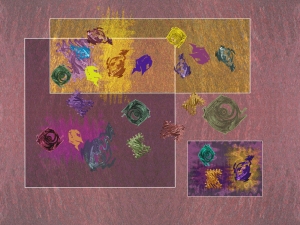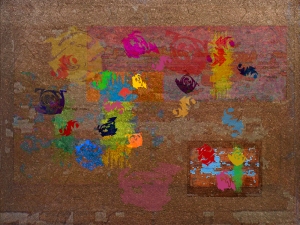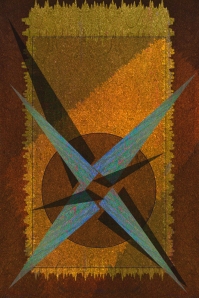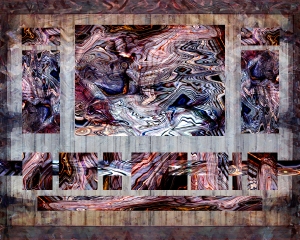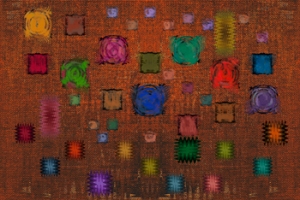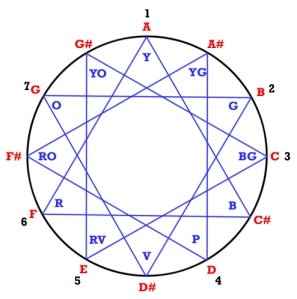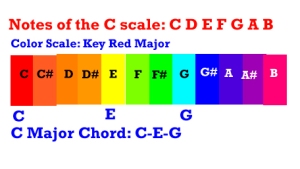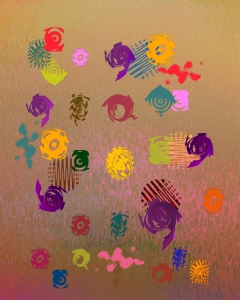The first of two created in September and October of 2013.
Seven rectangles make up the above work;These rectangles in turn create the levels or depths of the digital painting.The rectangle in the lower right is the key for the digital painting: it sets the color chords and the pattern of the shapes.
Each rectangle is organized using the bipartite method. The method is a means of describing the implied, energy lines embedded in the rectangle.
The basic principle used here is that the eye seeks out similarity in color, pattern, and shape. The viewer’s eye will of its own accord move to and from complete and incomplete versions of the key pattern found in the various rectangles; focusing on any one position of an element within that pattern moves the eye to its counterpart in the other rectangles. The same is true of the movement of color from rectangle to rectangle.
Finally, I used the empty energy loci within the larger implied rectangle to create a second movement to play against the first pattern.
The Second Composition
The principles used in the first painting apply to this one as well. I made three major changes: first I introduced a diagonal movement in each rectangle – other than the key – moving from the quarter point on the left side to the lower third point on the right; second, I removed the rectangle bounds and let the eye apprehend the rectangles; and third, I created another movement joining the key pattern and the diagonal pattern by darkening a glyph within each pattern.
